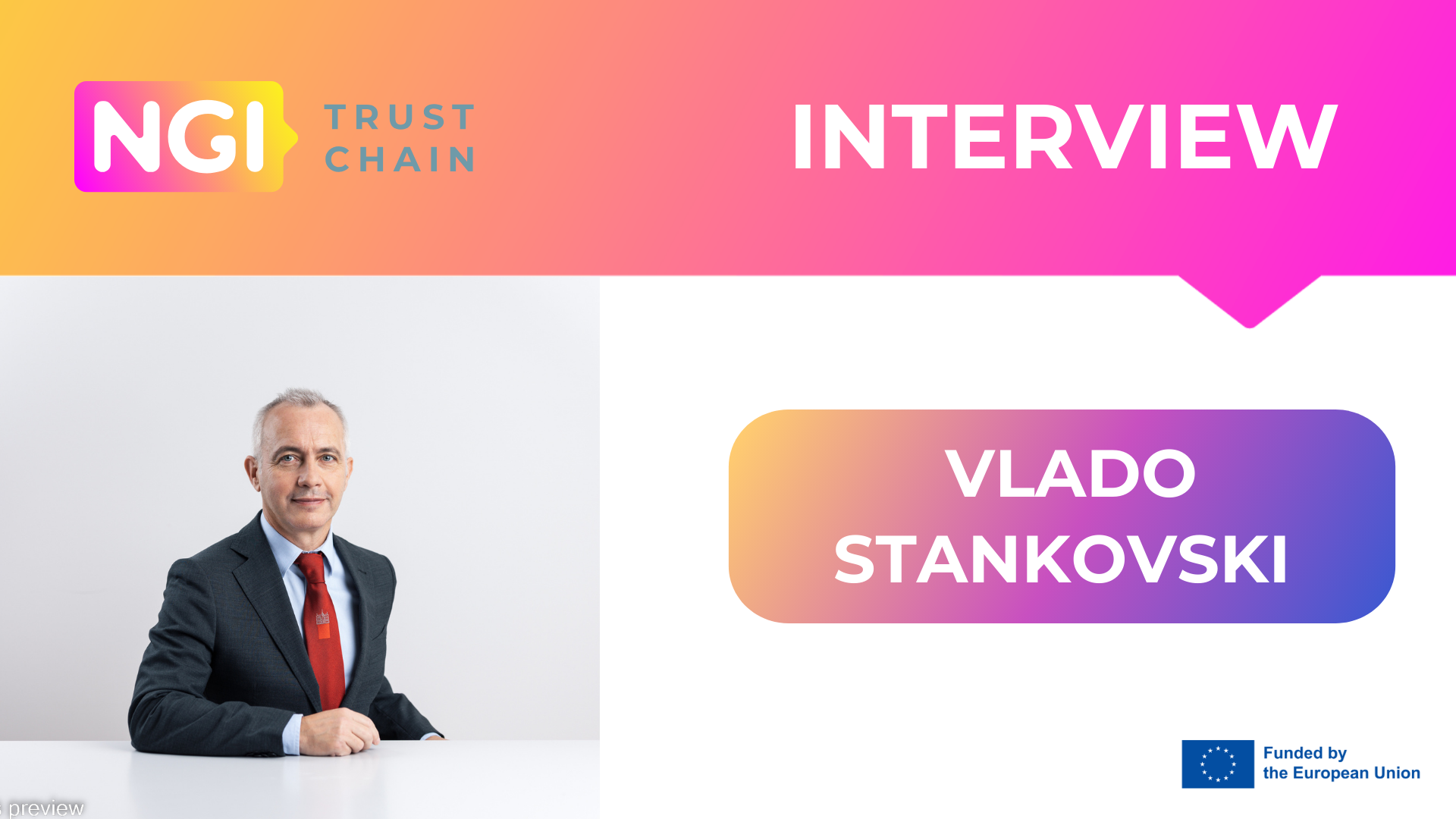Dr. Vlado Stankovski is a professor of computer and information science at the Faculty of Computer and Information Science, University of Ljubljana, Slovenia. He focuses on novel software engineering technology, semantics, distributed, edge, fog, and cloud computing, artificial intelligence, digital twins and blockchain technologies, and their integration. Flagship projects include DataMiningGrid, InteliGrid, mOSAIC, SWITCH, ENTICE, DECENTER.
Dr. Stankovski is a scientific and technical coordinator of the Horizon 2020 Next Generation Internet ONTOCHAIN (https://ontochain.ngi.eu/) and TRUSTCHAIN (https://trustchain.ngi.eu/) projects. Currently, he also participates in the ExtremeXP, ACES, BUILDCHAIN, EBSI-VECTOR and Swarmchestrate Horizon Europe projects.
In the light of his roles, this TrustChain interview will shed some light on Vlado’s and project team work, his insights on the next generation of internet and provide some tips for the future applicants.
What is the role of University of Ljubljana in TrustChain project and how did the participation in the project affected you professionally?
The University of Ljubljana plays an important role as it takes care of the architecture of the framework and technical project management. We are focusing on the agreement of common standards to be used among the participants, such as Decentralized identifiers of the Semantic Web. Moreover, we investigate software services integration aspects. We are continuously analyzing the ongoing projects and looking for ways for their meaningful integration. We are also continuously aligning the TrustChain framework with existing approaches and technologies, ensuring we give our participants a cutting edge over our competitors. Our work in the TrustChain project has very positive effects within our research group, for example, through our improved understanding of the potential of decentralized digital identity-based applications, the use of a variety of standards, and the need to address the human-centric dimension in the project.
Beside TrustChain, you are also technical coordinator in recently closed project called Ontochain. What are the main changes that you have noticed towards more trustworthy and human-centric internet and how does TrustChain stand out?
Indeed, we technically coordinated the ONTOCHAIN project that aimed to marry the Semantic Web with Blockchain. As part of this project, we produced a portfolio of software technologies that is probably one of the most advanced in the World nowadays. ONTOCHAIN features 44 state-of-the-art technology projects and many of them, including the produced software, can be directly explored from the ONTOCHAIN web site. We now bring this experience to the TrustChain project. We believe this experience has greatly enhanced our approach that aims to develop an even more focused portfolio of technologies centred around decentralized identities. Humanity needs a radically new way of interacting with the Internet that respect our needs for trust, security, privacy, democracy, sustainability and alike. All this is in the heart of the TrustChain project. The digital & decentralized identities hold the keys to an ever more Human-Centred Internet. Our project is designed to address the needs of not so IT savvy people that have great needs and may benefit for mechanisms that respect their human-rights.
How do you see the connection between the 5 Open Calls? Is there potential for synergies among the innovators’ projects?
The TrustChain open calls follow a layered architecture. The first call was designed to unlock the potential of decentralized identities with various wallets and solutions, some of which are compliant with the European Union’s eIDAS2 framework. On top of that we explore solutions for privacy and security in a variety of human-centred applications. The third open call builds a new layer of technology on top of the previous two layers by adding means to build democratic mechanisms, such as voting and alike, and to be able to engage in self-sustainable ecosystems, for example, by following the new principles of tokenomics. The final two open calls will build interledger and sustainable ledger technologies on top of the previous mechanism to demonstrate that all this added value can come not at the expense of sustainability. The idea is to demonstrate self-sustainable smart decentralized applications of the future. Bearing in mind that all the innovators work by following the very same principles, there is plenty of complementarity and possibility for collaboration among them. We expect that all participants take the time to review the ongoing projects and build on top of them, for example, by reusing already developed Application Programming Interfaces.
What is the main strength of the first 13 projects, chosen in the Open Call #1?
The main strength of the first 13 projects is their joint focus on the decentralized identity. It is very exciting to see how these solutions complement and upgrade each other. Some of them are also related to the eIDAS2 framework, which I previously mentioned.
What would you advise to the next Open Call applicants?
The 3rd Open Call focuses on democracy and economics. First, I would like to invite our prospective applicants to follow our Webinars where all the requirements of the call are explained in detail. In addition to this, I would think that following regulatory aspects within the European Union, and the methodologies for user-centric design can both significantly enhance any proposal. A focus on the minimum of the minimum viable products that can clearly show the innovation and its added value is highly recommended. Speaking about democracy, and economics within decentralized environments, both concepts have already been explored by many innovators. Here, the projects should systematically address the topic, by highlighting how they advance the state-of-the-art in the domain, and how their solution can be made usable in various contexts.

